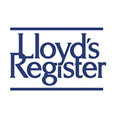Building a database in the cloud for the MIS is the easy part. Building an MIS application that draws inputs from cloud database is the difficult part. Your cloud service provider can help you or baulk your efforts in this direction. But before you look to your cloud service to provide you with the tools you need for designing and delivering a flawless MIS application to your employees, suppliers and customers, you need to get your expectations from the cloud MIS right.
The first question you should ask yourself: What is the kind of performance you expect from a cloud based MIS? Examine all the alternates available to you and arrive at your definition of optimum model for your organisation. Does the current application meet all the MIS objectives? Do you need to review? Re-engineer? Which alternate is the best fit? The answer to these questions will clarify and focus your thoughts on anticipated performance of the MIS.
Next you need to check on cost-effectiveness of the alternate cloud deployments. A cost-benefit analysis of each alternate model may come in useful in determining whether the cloud based MIS model will work for you. Even rough estimates of the costs of different components of the alternate MIS models will do to start with. Include costs of equipments; operations costs; manpower costs, maintenance costs and any other direct or indirect costs that is incurred in keeping the particular cloud MIS operational.
Third, have a deep look at the operational basis of all the MIS alternate models you have developed. Assess the strong and weak points of every alternate MIS application model you have with respect to the cloud database you will be using. Examine the quality of the database; the quality of the data, the ability of the database to withstand pressures of peak loads in processing and storage and anticipated preparedness to process ad hoc demands and handle de-duplication processes. This will give you clarity on what MIS application model will work with the cloud database and what will not.
Finally, examine the technical basis of the alternatives. Does the technology meet the requirements of storage, processing, communication, output and so on? Is the technology really available? If available, is it of the quality/ configuration expected? Will the acquisition of technology bust the budget? Is it too sophisticated for the staff to handle? The answer to these questions will put you on a firm footing with regard to what hardware/software you can and cannot use and the kind of training that may be required by your employees to use the MIS.




















